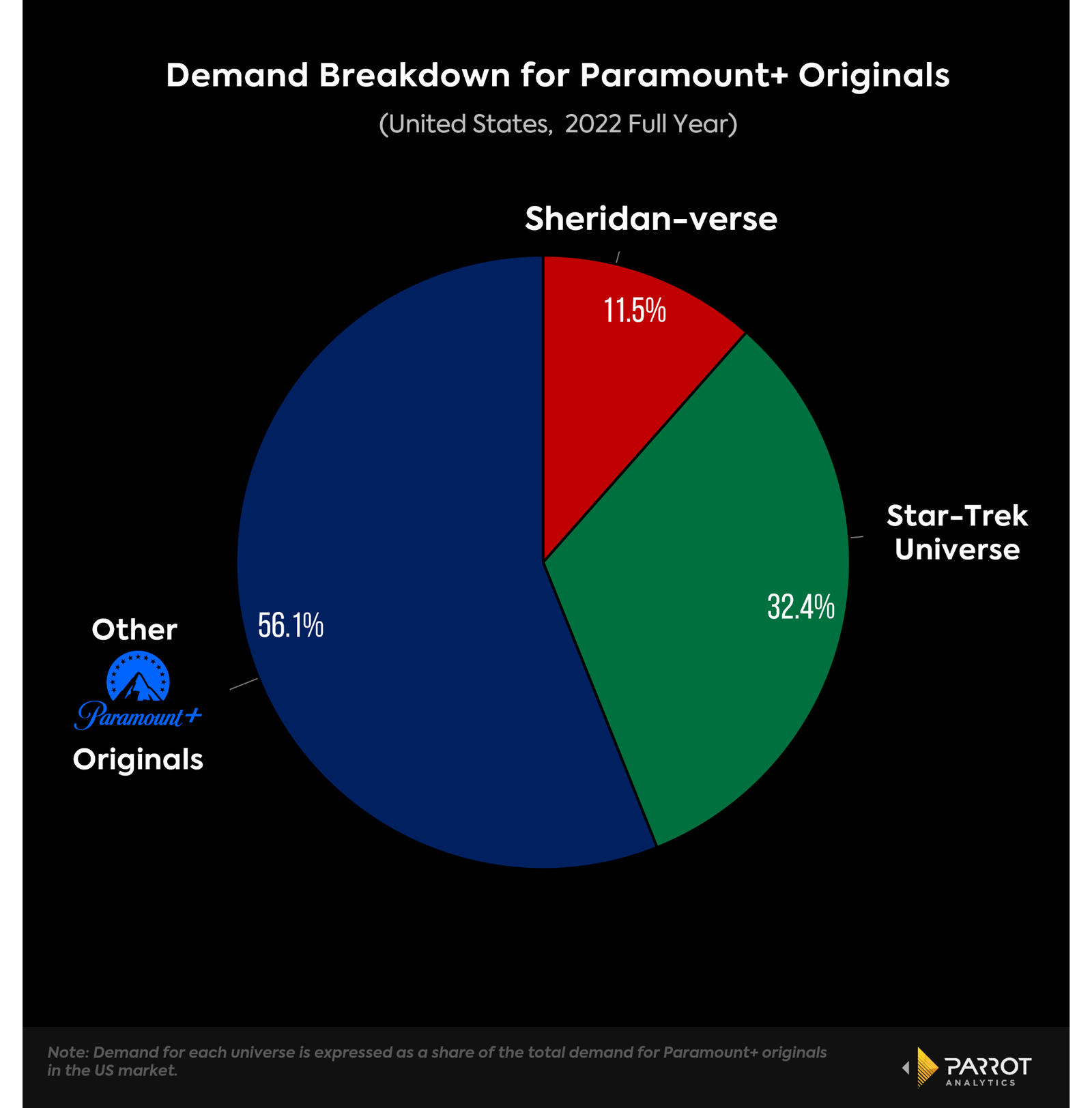Peak IP: Paramount+ Uses Franchises Like Star Trek, Sheridan-Verse to Drive Demand
In the 21st century, the mainstream entertainment industry has come to be defined by franchise intellectual property. Yet while minds might race toward the latest Star Wars, Marvel or Fast & Furious installment when discussing franchises, the reality is that they come in all shapes and sizes.
When looking at the audience demand breakdown for Paramount+ originals in the US throughout 2022, we see that that the Star Trek franchise — which hasn’t been on the big screen since 2016 — accounts for 32.4% while Yellowstone creator Taylor Sheridan’s growing roster of originals is responsible for 11.5%, according to Parrot Analytics. Star Trek is obviously legacy IP with deep genre roots in science-fiction and a cross generational fandom that dates back to the 1960s. Conversely, the Sheridan-Verse is a crop of Neo-Westerns that only began airing on Paramount+ in 2021 (Peacock licenses the streaming rights to flagship series Yellowstone, which premiered in 2018).
Together, they provide Paramount+ with a valuable long-running brand and newly established IP. They also help to double down on the older male audience driven to Paramount+ by CBS, which is responsible for the greatest share of audience demand on the streamer among Paramount Global’s many content brands.
These series serve as a reminder as to the various ways franchises can be developed and expanded while appealing to a core audience. Paramount+ deserves credit for keeping the Star Trek brand alive and well through creative and inclusive new programming and at a time when new-to-screen blockbuster concepts are struggling to break out at the box office, the small screen has been a kinder home for fresh IP.
It's not just Disney playing in the franchise sandbox!


